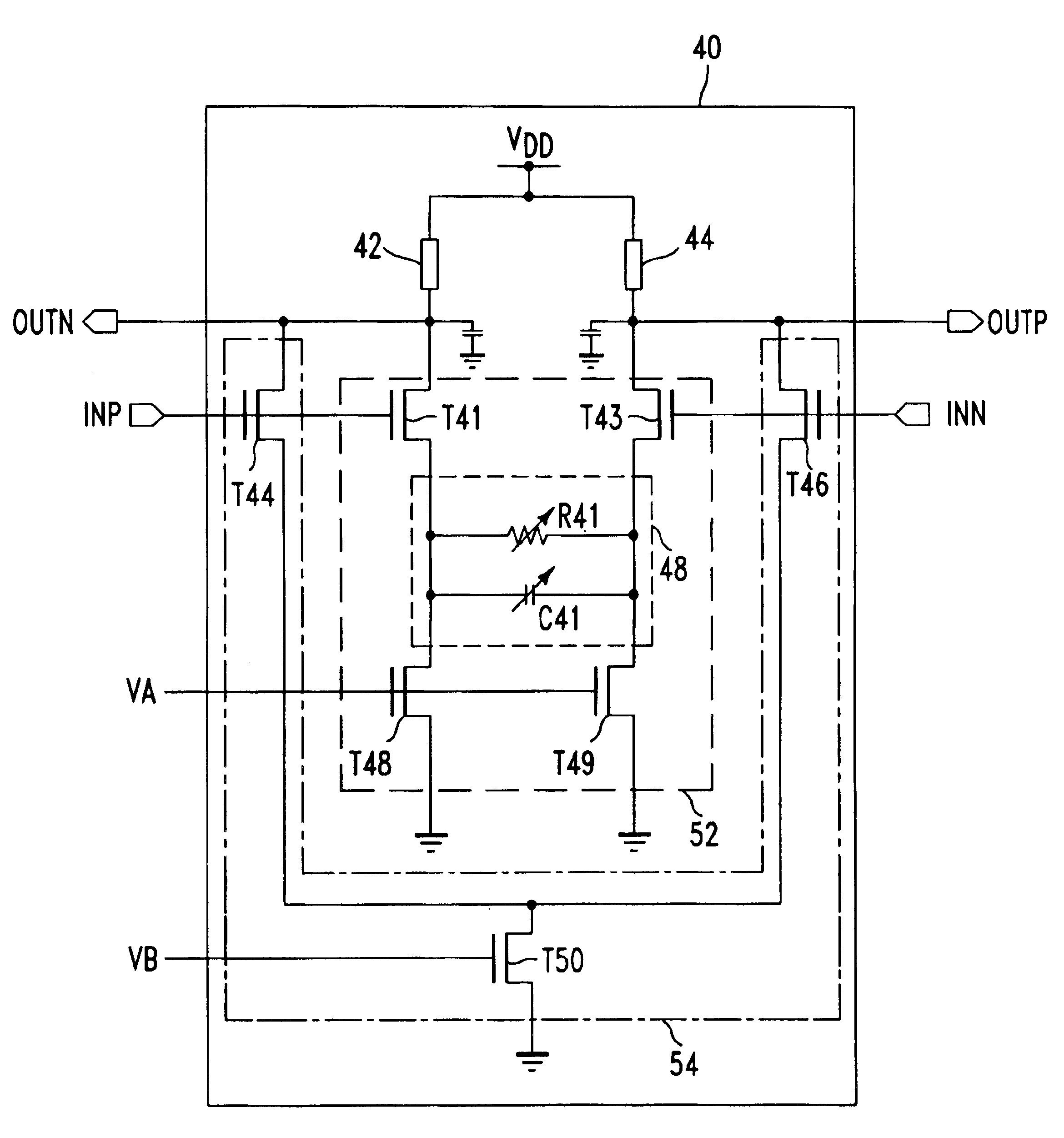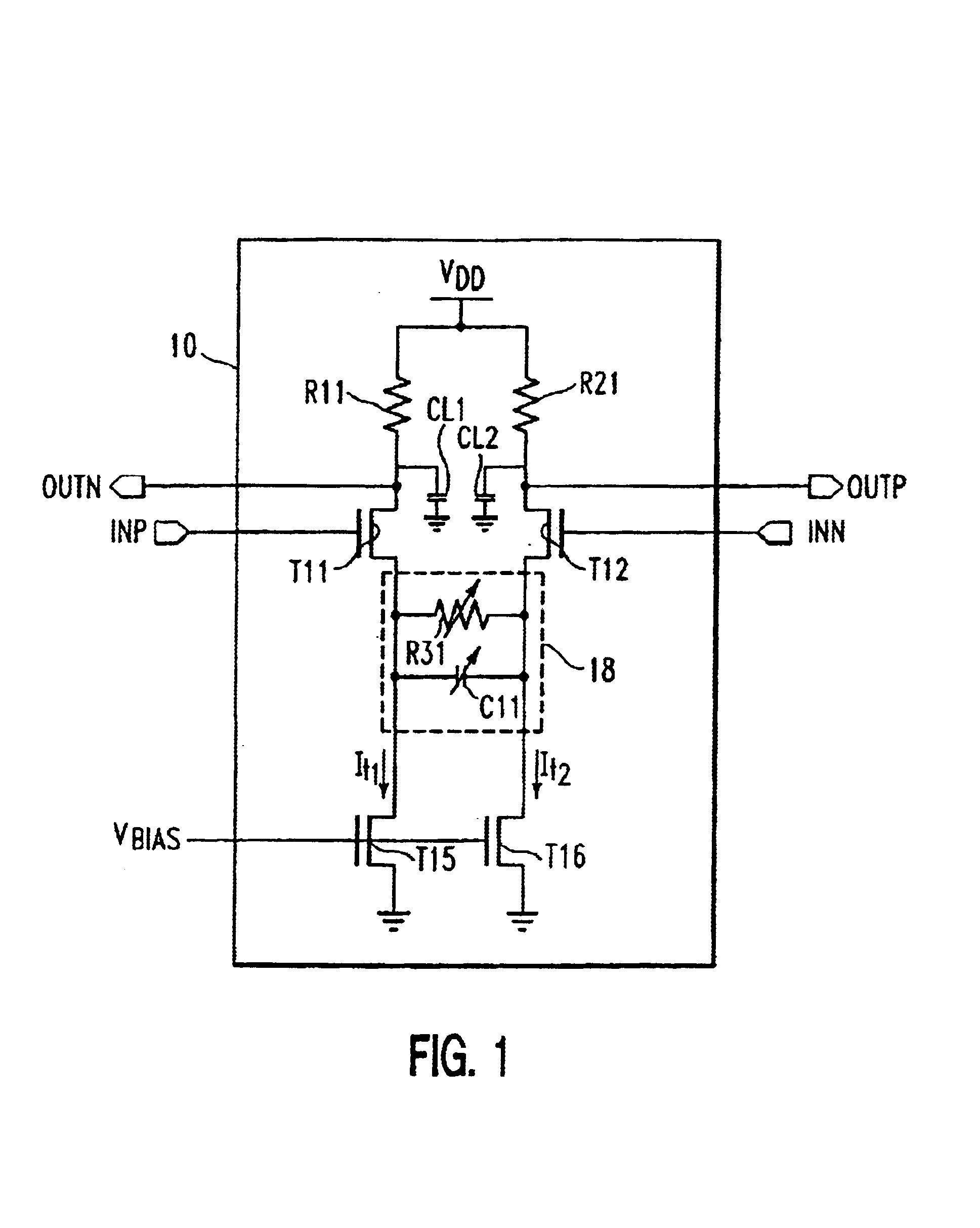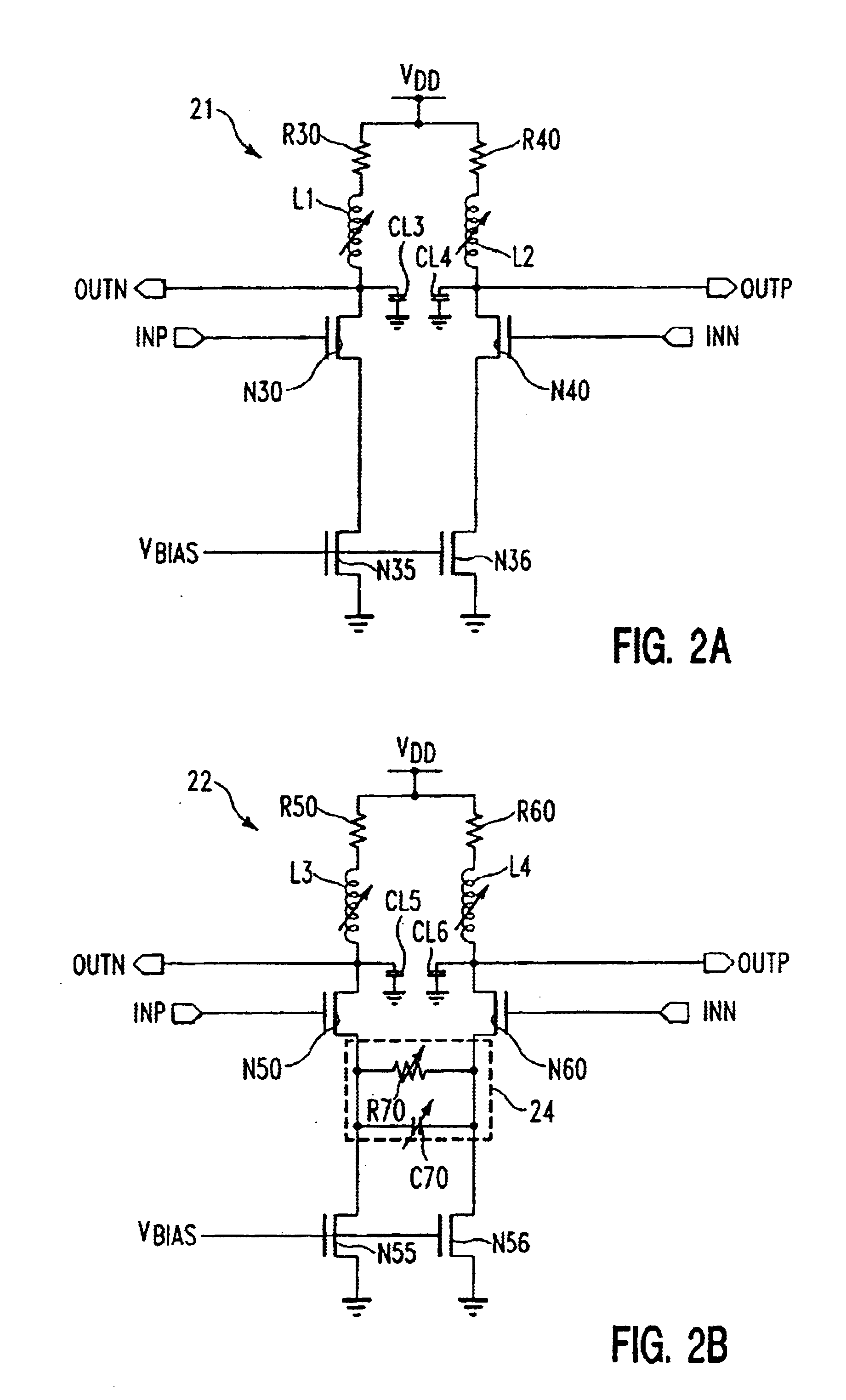Programmable peaking receiver and method
a receiver and programmable technology, applied in the field of communication systems, can solve the problems of data communication systems facing many challenges today, data transmission speeds are increasing, and the size of integrated circuits is being reduced rapidly
- Summary
- Abstract
- Description
- Claims
- Application Information
AI Technical Summary
Benefits of technology
Problems solved by technology
Method used
Image
Examples
first embodiment
[0028]an on-chip programmable peaking receiver 10 is shown in FIG. 1. The receiver 10 is known as a “peaking” receiver because there is a strong peak in sensitivity over a relatively narrow range of frequencies: in this case, in the high frequency range of the signal spectrum. When a peaking receiver boosts sensitivity at high frequency relative to low frequency, it can help compensate for inter-symbol interference (ISI), since a cause of ISI is high frequency roll-off of the signal spectrum input to the receiver, among others. A peaking receiver can also help suppress cross-talk noise, which includes interference arising from proximity to other transmitters and / or other receivers and signal lines, or which can be self-generated, e.g. as spurious harmonics of the signal. In addition, because a peaking receiver has increased sensitivity over a particular range of frequencies of interest, such peaking receiver can receive signals transmitted at lower transmission power. Lowered transm...
second embodiment
[0035]an on-chip programmable peaking differential signal receiver 21 is shown in FIG. 2A. In this embodiment, a pair of on-chip programmably adjustable inductive elements L1 and L2 are provided as load elements to enable the frequency peaking function of the receiver 21 to be adjusted. The impedance Z of an inductor varies directly with frequency, i.e. Z(L)=jÏ□L. Therefore, adjustable inductive elements L1 and L2 present load impedances that increase with frequency, to counteract high frequency rolloff that occurs otherwise. For example, high frequency rolloff occurs due to load capacitors CL3 and CL4. Such load capacitors CL3 and CL4, which include, in part, parasitic capacitances arising during fabrication, have impedances (1 / jÏ□C) that become lower at high frequencies, thus reducing the voltage drop across the load, and thereby reducing the differential output voltages OUTN and OUTP. By making the inductive load elements L1 and L2 programmably adjustable, the receiver 21 can be ...
PUM
 Login to View More
Login to View More Abstract
Description
Claims
Application Information
 Login to View More
Login to View More - R&D
- Intellectual Property
- Life Sciences
- Materials
- Tech Scout
- Unparalleled Data Quality
- Higher Quality Content
- 60% Fewer Hallucinations
Browse by: Latest US Patents, China's latest patents, Technical Efficacy Thesaurus, Application Domain, Technology Topic, Popular Technical Reports.
© 2025 PatSnap. All rights reserved.Legal|Privacy policy|Modern Slavery Act Transparency Statement|Sitemap|About US| Contact US: help@patsnap.com



